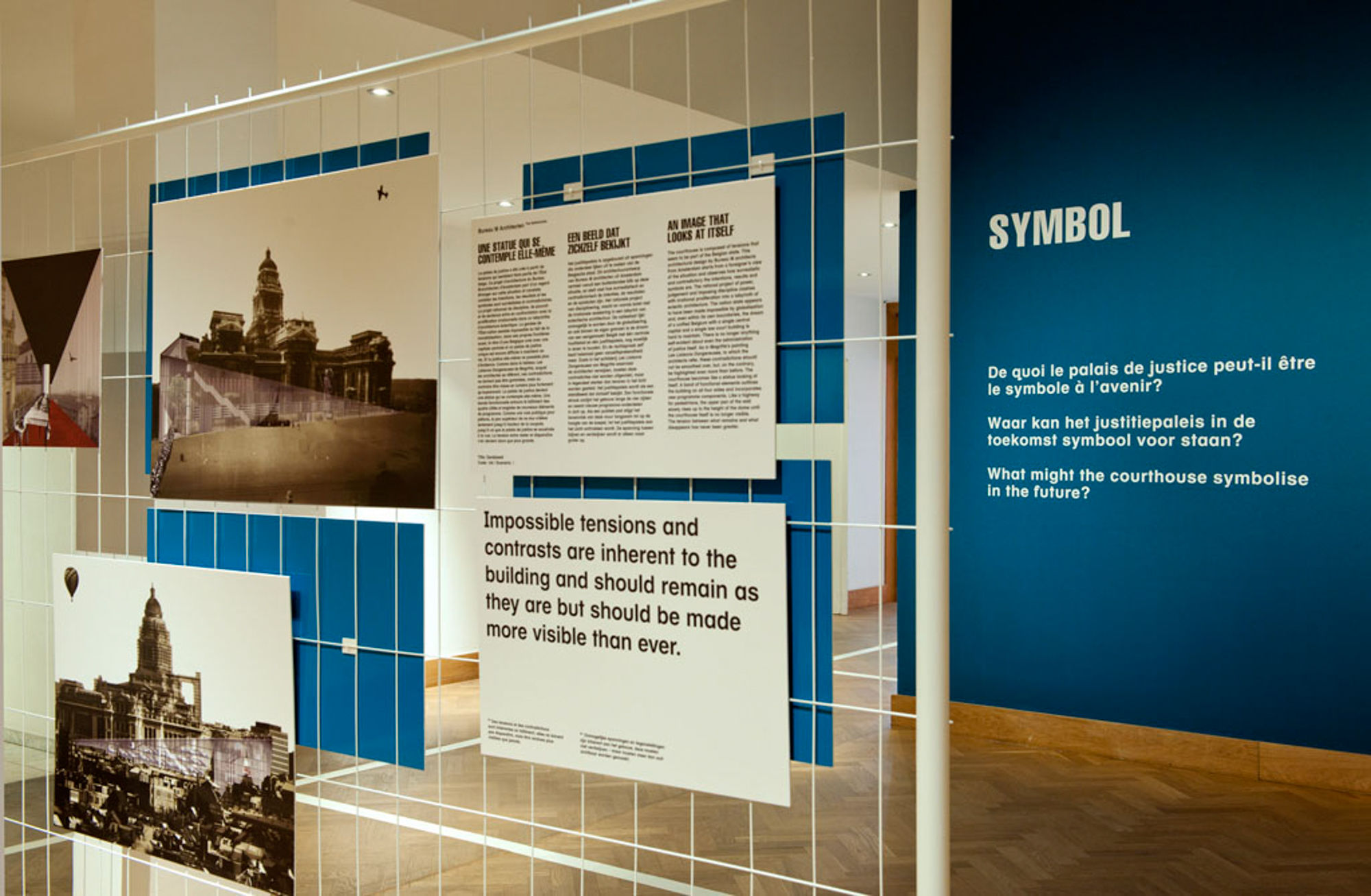No building is more widely talked about than the Palace of Justice in Brussels. Built between 1866 and 1883 by Joseph Poelaert, it evolved to become an icon of Belgian architecture. This monumental symbol of the rule of law defines the capital's skyline. However, these days it no longer satisfies the requirements in terms of safety and functionality. The societal role of justice has also changed. In other words, a strong vision is needed to modernise as well as protect the Palace of Justice.





Therefore in the spring of 2011, the Architecture for Justice exhibition was organised around the subject of the Palace of Justice in Brussels. The reason for this was the public ideas competition 'Brussels Courthouse, Imagine the future!' that FPS Justice and the Belgian Buildings Agency organised in 2010. Architecture Workroom Brussels was invited to be guest curator.
The objective of the ideas competition and the resulting exhibition was to research the future functions of the Palace of Justice and the immediate environment. Participants could choose between two scenarios: either the building would continue to serve as the Law Courts or this function would disappear for good.
Almost two hundred teams from home and abroad participated in the competition. The exhibition displayed thirty submissions and highlighted a wide range of views. The intention was not only to provide the winners with a platform, other ideas were also promoted.
The exhibition was organised around five major challenges for the future of the Palace of Justice, for which the submitted ideas and proposals provided solutions:
1. What could the Palace of Justice symbolise in the future?
2. How could the history of the place remain visible?
3. How could the monumental character of this icon be preserved?
4. How could this part of the city play a role in the dynamics of Brussels?
5. Can this historical architecture function in today's society?
Together with the safety and historical construction studies, the results of the international ideas competition and this exhibition constituted a firm basis for the design and implementation of a future project for the Palace of Justice and the surrounding part of the city.


